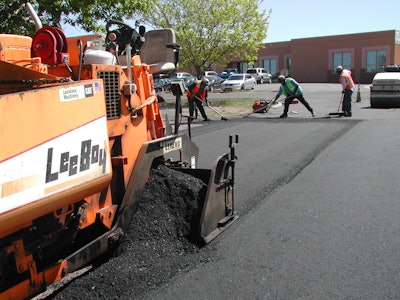
First things first: You shouldn’t need to rake the hot mix asphalt you place. If you follow proper paving procedures, the amount of mix you’ll leave at the longitudinal joint will be within an acceptable range that enables proper compaction and makes it easier for the roller operator to achieve proper density.
“If you’re paving a second lane and the paver operator places the correct amount of new material over the first lane do not move the material. Leave it there!” says John Ball, Top Quality Paving. “Put the right amount of material in the right spot and leave it alone.”
Jim Scherocman, consulting engineer, agrees that if the proper amount of mix is placed in the proper place, no raking of the mix at the longitudinal joint is necessary. In fact, Scherocman says that virtually any raking done makes it less likely the roller operator will be able to achieve the necessary density, and the result will be premature failure of the joint.
Manage Overlap Thickness & Width
If the proper amount of mix is placed overlapping the longitudinal joint, raking is unnecessary. Scherocman says two factors need to be considered when determining the overlap of the screed’s end or edger plate over the edge of lane 1 when placing mix for lane 2. First is the thickness of the uncompacted mix from lane 2 over the top of the compacted mix at the edge of lane 1. Second is the width of the overlap of the mix from lane 2 over the top of lane 1.
Scherocman says that dense-graded mix typically compacts at a rate of 1/4 in. per inch of final thickness. So to achieve a compacted thickness of 1 in., the mix usually must be placed at an uncompacted thickness of about 1-1/4 in. To obtain a compacted thickness of 2 in., the uncompacted mix must be placed to a thickness of approximately 2-1/2 in.
“When mix from lane 2 is placed over the top of the compacted mix on lane 1, the mix needs to be higher by the amount of compaction that will occur,” Scherocman says.
The width of overlap of mix from lane 2 onto lane 1 is also critical. “If an excessive amount of mix is placed over the edge of lane 1, it will have to be removed by raking the joint or it will be crushed by the rollers,” Scherocman says. “If not enough mix is placed over the edge of the first lane, a depression or dip will occur on the lane 2 side of the longitudinal joint. In either case, the joint will not perform properly.”
“If the overlap is too much and you push the material from the compacted first lane to the uncompacted second lane, you don’t have enough material at the joint in the second lane to get density at the joint,” Ball says. “Failure will result.”
Scherocman recommends a “best practice” of placing the overlap in the range of 1 to 1-1/2 in. wide to avoid raking (and for proper longitudinal joint construction).
But if You Do Need to Rake...
Scherocman says that if too much mix is placed over the top of lane 1– if the paver operator didn’t do a good job, in other words, and the mix is too thick – the excess material should be removed with a shovel, moving longitudinally along the joint, instead of pushing or raking the material transversely across the joint.
“That’s not how most people do it because it’s not convenient,” Scherocman says. “The easy way and the most convenient way is to broadcast the excess mix across the uncompacted mat, but that’s incorrect also.”
He says the excess material should be considered waste and should be removed and recycled.
If raking is required, it’s essential that enough mix is left at the joint to facilitate compaction.
“The problem is, the raker often rakes the joint flat, meaning the compacted first lane is equal in height to the uncompacted second lane,” Ball says. “If you rake the joint flat there isn’t anything for the roller to compact because the raker has pushed all the material away from the joint.”
Scherocman says the raking process almost always results in the mix being too low at the joint on the lane 2 side.
“Essentially, the mix ends up at the same elevation of each side of the joint. The problem is that the mix on one side of the joint is compacted (lane 1) and the mix on the other side of the joint is not yet compacted (lane 2),” Scherocman says. “This will result in very low density at the longitudinal joint on the lane 2 side of the joint,” Scherocman says.
In addition, by broadcasting the excess mix across the uncompacted mat you’re creating mat problems because that mix hasn’t been set in the mat by the paver; it’s sitting on top of a mat that’s been partially compacted by the paver’s screed and, depending on the amount and gradation of the mix, might not become part of the mat even after compaction.
Scherocman says if raking is absolutely necessary, the excess material should be raked onto the compacted mat, then removed and recycled.
“The bottom line is, you don’t need to rake the joint at all if you put the right amount of material in the right spot,” Scherocman says.
Ball adds that sometimes rakers are just doing what they’re told.
“Often rakers rake because they’re told to rake and they don’t want to be seen doing nothing. But sometimes the best thing a raker can do is stand there,” Ball says.





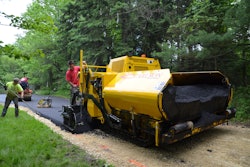
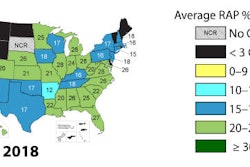
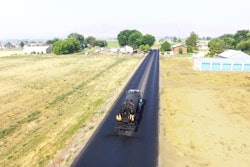
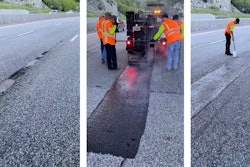


![Lee Boy Facility 2025 17 Use[16]](https://img.forconstructionpros.com/mindful/acbm/workspaces/default/uploads/2025/09/leeboy-facility-2025-17-use16.AbONDzEzbV.jpg?ar=16%3A9&auto=format%2Ccompress&fit=crop&h=135&q=70&w=240)








